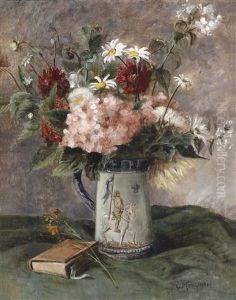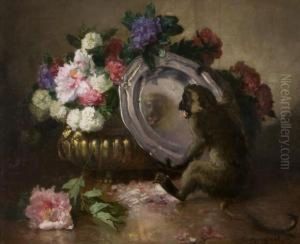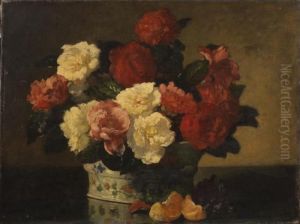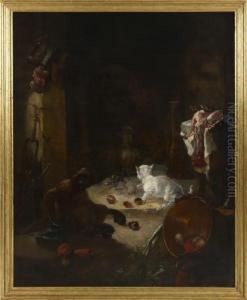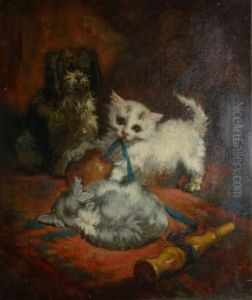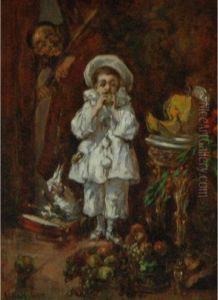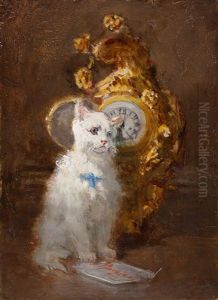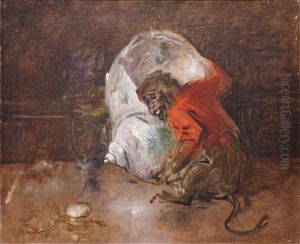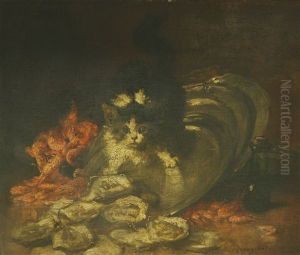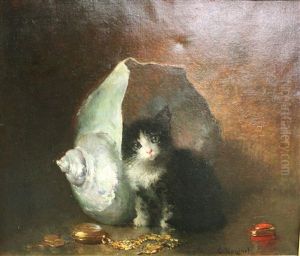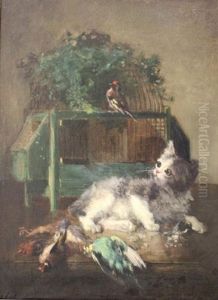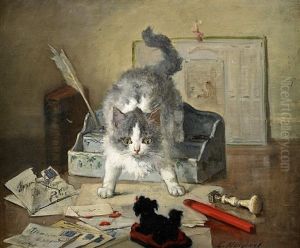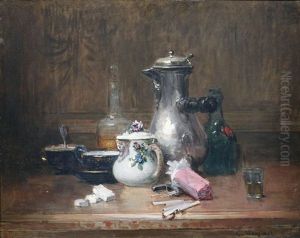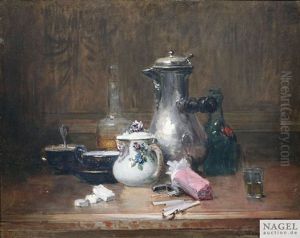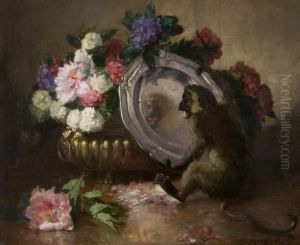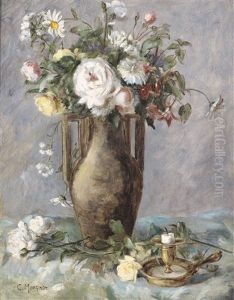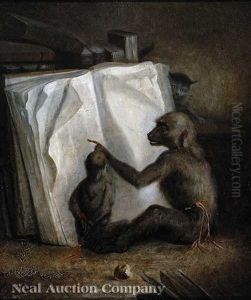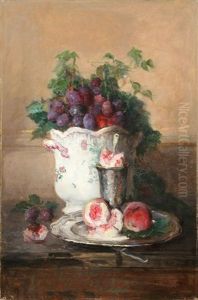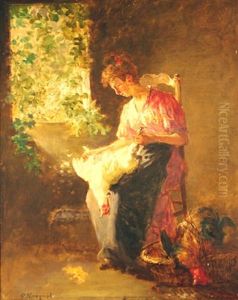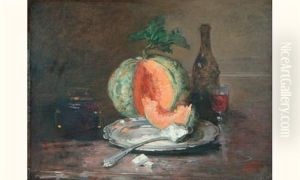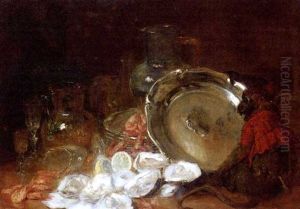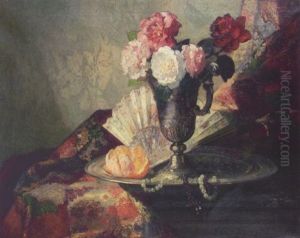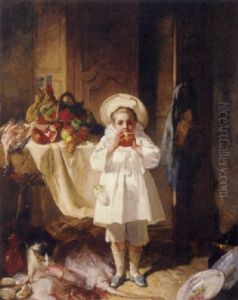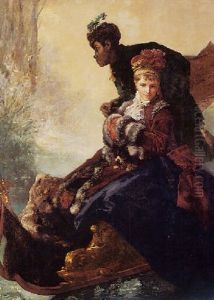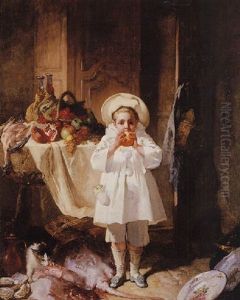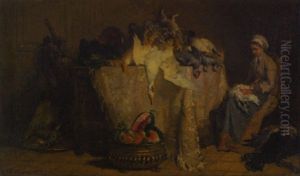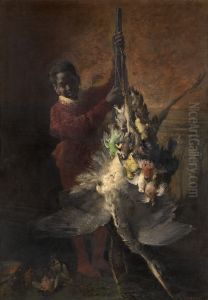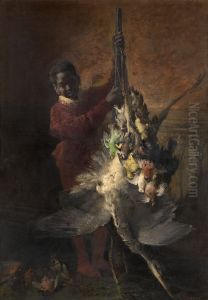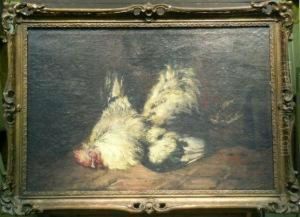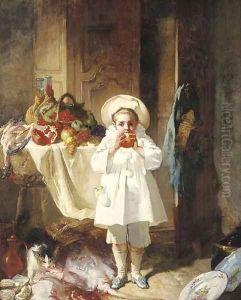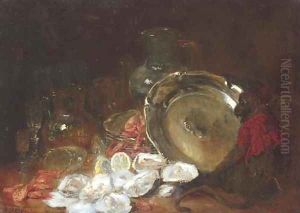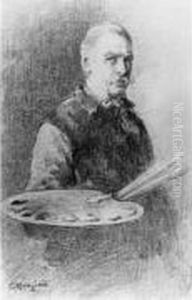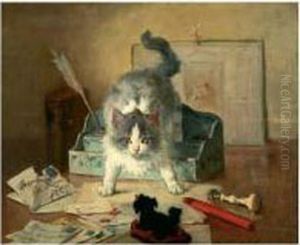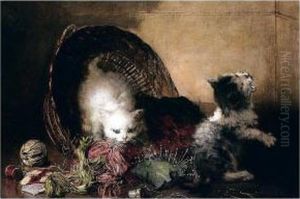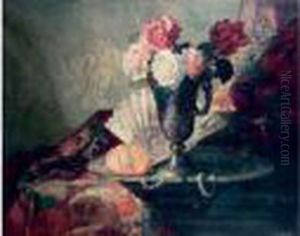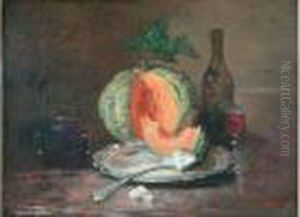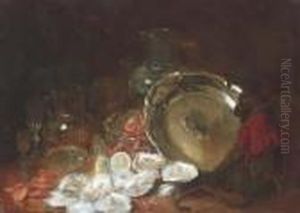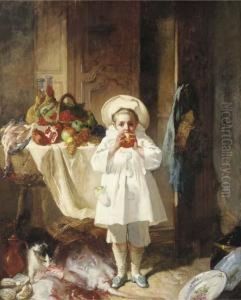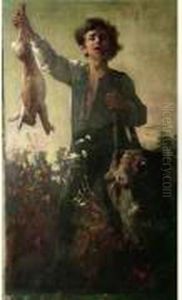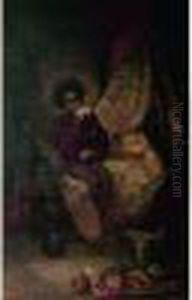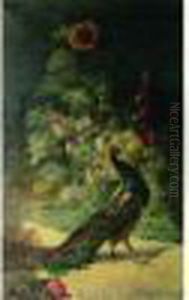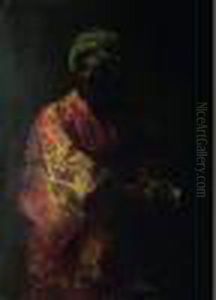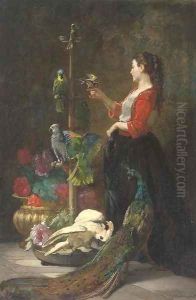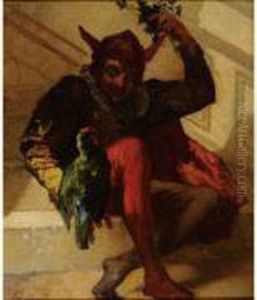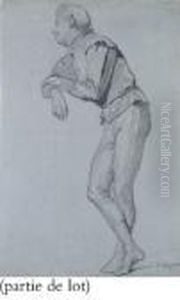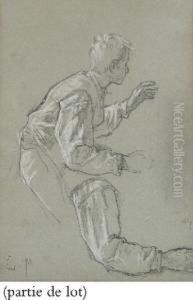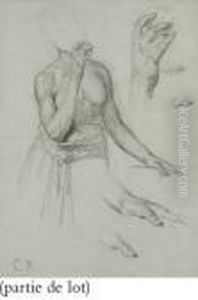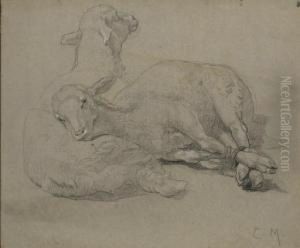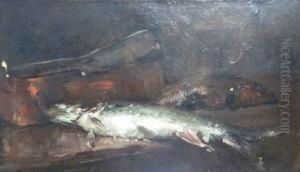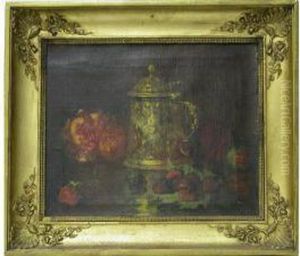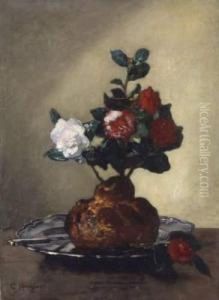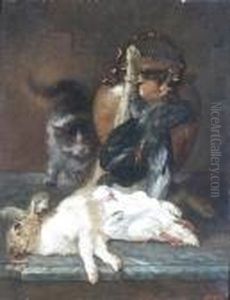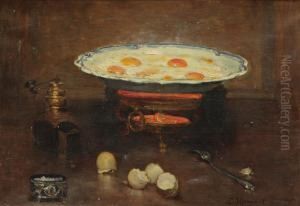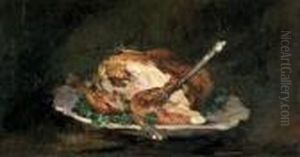Charles Monginot Paintings
Charles Monginot was a French painter, born on December 18, 1825, in the commune of Dienville in the Aube department of France. He was known for his genre paintings, still lifes, and portraits. Monginot studied in Paris under the guidance of influential artists such as Paul Delaroche and later, Charles Gleyre. These teachers were notable for their academic style and imparted a sense of classical composition and technique to Monginot.
Monginot established himself in the Parisian art scene and exhibited at the prestigious Paris Salon, an official art exhibition of the Académie des Beaux-Arts in Paris. His works were well-received, and he gained recognition for his attention to detail and his ability to capture the textures and nuances of his subject matter, particularly in his still life paintings.
Although Monginot was a contemporary of the Impressionists, his style remained rooted in the academic tradition, favoring realism and precise brushwork over the looser, more experimental techniques of his peers who were pushing the boundaries of art during the latter half of the 19th century. Despite this, his work did exhibit some of the qualities seen in Impressionist paintings, such as the interest in natural light and everyday subjects.
Throughout his career, Monginot's work was honored with awards and he was recognized as a talented artist by his contemporaries. However, after his death on February 10, 1900, in Neuilly-sur-Seine, his name did not resonate through art history as strongly as some of his contemporaries. Today, Charles Monginot's work is appreciated by art historians and collectors who value 19th-century French academic painting, and his paintings can be found in museums and private collections in France and around the world. His legacy is that of a skilled painter who captured the spirit of his time while maintaining a commitment to the traditional values of fine art.
